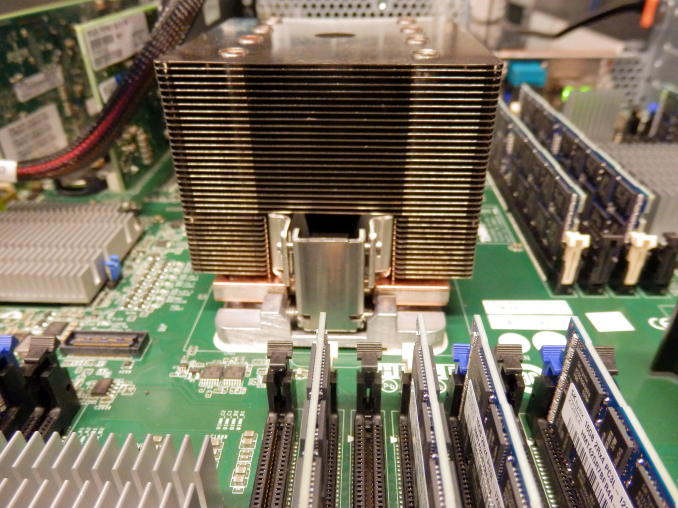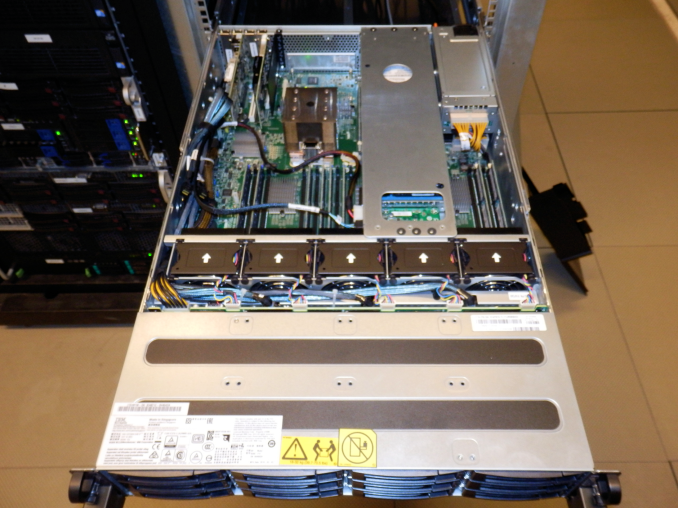Assessing IBM's POWER8, Part 1: A Low Level Look at Little Endian
by Johan De Gelas on July 21, 2016 8:45 AM EST
It is the widest superscalar processor on the market, one that can issue up to 10 instructions and sustain 8 per clock: IBM's POWER8. IBM's POWER CPUs have always captured the imagination of the hardware enthusiast; it is the Tyrannosaurus Rex, the M1 Abrams of the processor world. Still, despite a flood of benchmarks and reports, it is very hard to pinpoint how it compares to the best Intel CPUs in performance wise. We admit that our own first attempt did not fully demystify the POWER8 either, due to the fact that some immature LE Linux software components (OpenJDK, MySQL...) did not allow us to run our enterprise workloads.
Hence we're undertaking another attempt to understand what the strengths and weaknesses are of Intel's most potent challenger. And we have good reasons besides curiosity and geekiness: IBM has just recently launched the IBM S812LC, the most affordable IBM POWER based server ever. IBM advertises the S812LC with "Starting at $4,820". That is pretty amazing if you consider that this is not some basic 1U server, but a high expandable 2U server with 32 (!) DIMM slots, 14 disk bays, 4 PCIe Gen 3 slots, and 2 redundant power supplies.
Previous "scale out" models SL812 and SL822 were competitively priced too ... until you start populating the memory slots! The required CDIMMs cost no less than 4(!) times more than RDIMMs, which makes those servers very unattractive for the price conscious buyers that need lots of memory. The S812LC does not have that problem: it makes use of cheap DDR3 RDIMMs. And when you consider that the actual street prices are about 20-25% lower, you know that IBM is in Dell territory. There is more: servers from Inventec, Inspur, and Supermicro are being developed, so even more affordable POWER8 servers are on the way. A POWER8 server is thus quite affordable now, and it looks like the trend is set.
To that end, we decided that we want to more accurately measure how the POWER8 architecture compares to the latest Xeons. In this first article we are focusing on characterizing the microarchitecture and the "raw" integer performance. Although the POWER8 architecture has been around for 2 years now, we could not find any independent Little Endian benchmark data that allowed us to compare POWER8 processors with Intel's Xeon processors in a broad range of applications.
Notice our emphasis on "Little Endian". In our first review, we indeed tested on a relatively immature LE Ubuntu 14.04 for OpenPOWER. Some people felt that this was not fair as the POWER8 would do a lot better on top of a Big Endian operating system simply because of the software maturity. But the market says otherwise: if IBM does not want to be content with fighting Oracle in an ever shrinking high-end RISC market, they need to convince the hyper scalers and the thousands of smaller hosting companies. POWER8 Server will need to find a place inside their x86 dominated datacenters. A rich LE Linux software ecosystem is the key to open the door to those datacenters.
When it comes to taking another crack at our testing, we found out that running Ubuntu 15.10 (16.04 was just out yet when we started testing) solved a lot of the issues (OpenJDK, MySQL) that made our previous attempt at testing the POWER8 so hard and incomplete. Therefore we felt that despite 2 years of benchmarking on POWER8, an independent LE Linux-focused article could still add value.











124 Comments
View All Comments
JohanAnandtech - Thursday, July 28, 2016 - link
Ah, you will have to wait for the improved P8 which is the first Power going after HPC :-)RISC is RISKY! - Tuesday, August 2, 2016 - link
I would support "Brutalizer". Every processor has its strength and weakness. If memory architecture is considered, for the same capacity, Intel is conjested memory, IBM is very distributed and Oracle-Sun is something in between. So Intel will always have memory B/W problem every way. IBM has memory efficiency problem. Oracle in theory doesn't have problem, but with 2 dimm per ch, that look like have problem. Oracle-Sun is for highly branched workload in the real world. Intel is for 1T/Core more of single threaded workloads and IBM is for mixed workloads with 2T-4T/Core priority. So supercomputing workloads will work fast on IBM now, compared to intel and sparc, while analytics and graph and other distributed will work faster on SPARC M7 and S7 (although S7 is resource limited). While for intel, a soft mix of applications and highly customized os is better. Leave the business decisions and the sales price. List prices are twice as much as sales price in the real world. These three processors (xeon e5v4, power8-9, sparc m7-s7) are thoroughly tuned for different work spaces with very little overlap. So there's no point in comparing them other than their specs. Its like comparing a falcon and a lion and a swordfish. Their environments are different even though all of them hunt. Thats in the real world. So benchmarks are not the real proof. We at the university of IITD have lots and lots of intel xeon e5v4, some P8 (10-15 single and dual sockets), and a very few (1-2 two socket M7 and 2 two socket S7). We run anything and every thing on any of these, we get our hands on. And this is the real world conclusion. So don't fight. Its a context centric supply.RISC is RISKY! - Tuesday, August 2, 2016 - link
of processors!rootvgnet - Friday, August 12, 2016 - link
Johan - interesting article, I enjoyed it - especially after I discovered how to get to the next page.As far as the comments go - 1) a good article will get a diverse response (from those with an open, read querying, mind.
2) I agree with those who, in other words are saying: "there is no 'one size fits all'." And my gut reaction is that you are providing a level of detail that assists in determining which platform/processor "fits my need"
Looking forward to part2.